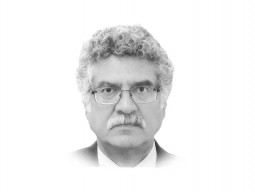
The situation in Indus Delta is deteriorating due to non-availability of fresh water. The subsoil water has turned brackish, which is unfit for human and livestock consumption. The worst affected Talukas include Ghorabari, Keti Bunder and Kharo Chan, where sea intrusion has significantly affected the land and consequently, people are left with no option but to migrate to various locations.
The export of fisheries resource contributes almost 2% of the total national exports amounting to Rs8.8 billion annually. Of the total export, shrimp contributes 60%. Besides fishing, many people are engaged in agriculture and livestock rearing. The loss of livelihoods has caused a rise in poverty levels, malnutrition and the deterioration of people’s health in general. The scarcity of potable and uncontaminated water is a significant factor that contributes to the increasing incidence of diseases of the skin, eyes and the digestive tract.
The survival of Indus Delta is dependent on the silt-laden freshwater discharges from the Indus River, which has been curtailed due to the diversion of water for agriculture, power generation and other uses in the upper reaches. The freshwater flows into the Delta during the recent years have been inconsistent and mostly below the minimum required quantity. The reduction in the inflow of freshwater has exposed this complex ecosystem to several environmental and social stresses in the form of loss of habitat and biodiversity and a decline in the productive values of the ecosystem.
Competition over water allocation within river basins, especially between upstream and downstream areas, between large-scale and subsistence-level uses, and between commercial and ecosystem uses, is becoming a source of severe economic and political conflict. In many ways the Indus Delta case epitomises a national situation which has already reached a crisis point. For now, national policies have opted to allocate scarce water so as to maximise financial and commercial returns to agriculture often at the cost of natural ecosystems and of some of the country’s poorest communities. Yet there is growing concern that the failure to factor ecological economic values, or economic losses, into the river basin planning is resulting in decisions being made about water allocation that are neither ecologically nor economically optimum. As long as the economic value of ecosystem needs for freshwater flows is marginalised in the national decision-making, these conflicts are likely to escalate.
According to a study conducted by IUCN in 2003, sea water reached up to 54kms in the main course of the Indus River. While in the last 70 years, Keti Bunder town has changed its location three times due to sea intrusion. It is deplorable that there is no dedicated organisation to conduct regular damage assessment caused by sea intrusion.
However, Sindh Chief Minister Murad Ali Shah’s statement regarding sea intrusion is commendable. It is high time that both the federal and Sindh governments worked together to revive the Indus Delta through a comprehensive rehabilitation programme with an independent body to implement it. The plan should envisage the revival of threatened species, protection of environment, resettlement of people and long-term coastal zone management. A comprehensive multi-disciplinary study must be conducted to determine the volume of water required for the protection, preservation and revival of the Delta and blocking sea intrusion.
The sea intrusion can only be tackled through a sustained river water flow and bringing more land under mangrove forest, which are natural guardian of the Pakistani coast. The 1991 water accord must be revisited by incorporating environmental flow concept and declare the Indus Delta as the fifth shareholder of water distribution, bedsides the four provinces.
Published in The Express Tribune, October 1st, 2018.
Like Opinion & Editorial on Facebook, follow @ETOpEd on Twitter to receive all updates on all our daily pieces.













1734946202-0/Express-Tribune-(6)1734946202-0-270x192.webp)
1732012115-0/Untitled-design-(14)1732012115-0-270x192.webp)
1734899716-0/image-(15)1734899716-0-270x192.webp)



COMMENTS (3)
Comments are moderated and generally will be posted if they are on-topic and not abusive.
For more information, please see our Comments FAQ